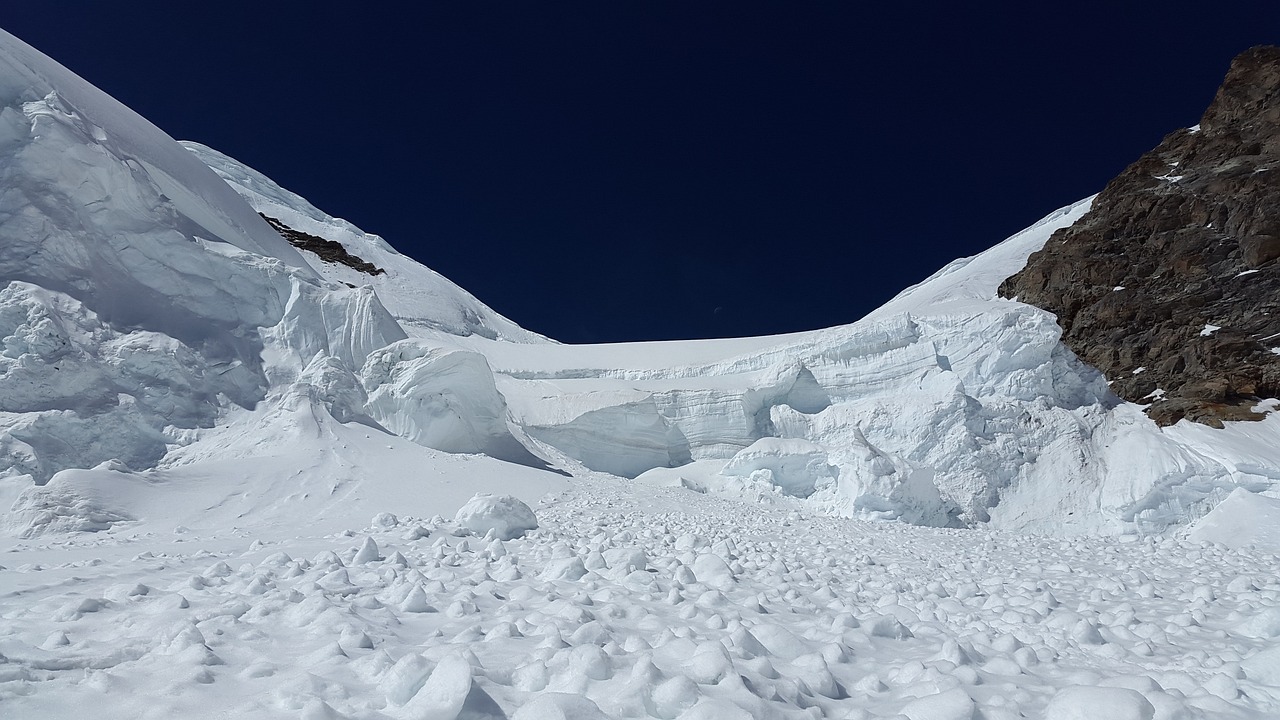The serene beauty of the mountains can be awe-inspiring, drawing countless outdoor enthusiasts to their slopes year-round. However, these majestic peaks also conceal a hidden danger that can strike without warning – avalanches. Every year, avalanches claim lives and pose a serious threat to those who venture into avalanche-prone areas. Surviving an avalanche requires not only luck but also knowledge, preparedness, and the right equipment. In this comprehensive guide, we will delve into the essential strategies and equipment needed to increase your chances of surviving an avalanche.
Understanding Avalanche Basics
Before delving into safety strategies and equipment, it’s crucial to understand the basics of avalanches. Avalanches occur when a mass of snow, ice, and debris descends down a mountain slope. These forces can reach astonishing speeds and destructive power, making avalanches deadly. Here are some key points to know:
- Trigger Factors: Avalanches can be triggered by various factors, including human activity (such as skiing or snowboarding), natural events (like heavy snowfall or earthquakes), or a combination of both. Understanding what can trigger an avalanche is the first step in staying safe.
- Avalanche Terrain: Some slopes are more prone to avalanches than others. Steep, snow-covered slopes with a particular type of snowpack are more likely to release avalanches. It’s crucial to learn how to identify avalanche terrain and avoid it when necessary.
- Avalanche Paths: These are the routes that avalanches typically take. Being aware of the paths and their potential danger zones can help you make informed decisions about your travel route.
- Types of Avalanches: Avalanches come in various forms, including slab avalanches, loose snow avalanches, and wet avalanches. Each type has unique characteristics and requires different safety precautions.
Safety Strategies
Surviving an avalanche involves making smart decisions and having a solid safety plan in place. Here are some key safety strategies to consider:
- Education: The first and most crucial step in avalanche safety is education. Take an avalanche safety course to learn about avalanche dynamics, terrain assessment, and rescue techniques. Knowing how to read the snowpack and terrain can make all the difference.
- Avalanche Forecast: Check the avalanche forecast for your chosen area before heading out. These forecasts are typically provided by local authorities or organizations and offer valuable information about avalanche danger levels and trends.
- Travel in Groups: Never venture into avalanche terrain alone. Travel with a group of experienced individuals who are familiar with avalanche safety protocols. If someone gets caught in an avalanche, having teammates for a rescue operation is essential.
- Equipment: Carry essential avalanche safety equipment, which we will discuss in detail in the next section. This includes avalanche beacons, probes, shovels, and airbags. Make sure everyone in your group is equipped and knows how to use these tools.
- Terrain Assessment: Continuously assess the terrain you’re traversing. Look for signs of recent avalanches, such as fracture lines and debris piles. Avoid traveling under cornices or on slopes steeper than 30 degrees whenever possible.
- Route Planning: Plan your route carefully, taking into account the avalanche danger level, weather conditions, and your group’s skills. Always have escape routes and safe zones in mind, so you can react quickly if needed.
- Communication: Maintain clear and constant communication with your group members. Agree on hand signals and establish a plan for regrouping and decision-making.
- Timing: Be mindful of the timing of your backcountry adventures. Early mornings are often safer, as the snowpack is more stable after a cold night. As the day warms up, the risk of avalanches can increase.
Essential Avalanche Safety Equipment
Having the right equipment can be a lifesaver in the event of an avalanche. Here are the essential items you should carry and how to use them:
- Avalanche Beacon (Transceiver): An avalanche beacon is a device that emits a signal that can be picked up by other beacons. Every member of your group should wear one. If someone is buried in an avalanche, the beacon helps others locate them quickly. Practice using your beacon regularly to ensure proficiency.
- Avalanche Probe: This is a collapsible pole used to search for buried victims. In an avalanche rescue scenario, you insert the probe into the snowpack and probe methodically to locate the buried person. Training and practice are essential to effectively use an avalanche probe.
- Shovel: A sturdy, collapsible snow shovel is essential for digging out a buried person. Choose a lightweight yet durable model that can withstand the rigors of backcountry use. Practice using it to become efficient at digging in avalanche debris.
- Avalanche Airbag: An avalanche airbag is a wearable device that, when deployed, inflates a large airbag to keep you closer to the surface of the snow during an avalanche. This can increase your chances of staying on top of the moving debris. Remember that an airbag is not a guarantee of survival but can be a valuable tool when used in conjunction with other safety measures.
- Avalanche Rescue Gear: In addition to personal equipment, carry a first aid kit, headlamp, extra clothing, food, and a map and compass or GPS device. These items can be crucial for staying safe and comfortable in the backcountry, especially if you’re stuck for an extended period.
- Helmet: While not specifically designed for avalanche safety, a helmet can provide protection in the event of a slide or impact with debris. It’s an important piece of equipment for any snow sports enthusiast.
- Avalanche Airbag Pack: Some backpacks come equipped with built-in avalanche airbags. These packs have space for your safety gear and provide an additional layer of protection if you’re caught in an avalanche. Make sure to practice deploying the airbag in a controlled setting.
- Communication Devices: Carry a two-way radio or satellite phone to maintain contact with your group and emergency services. Cell phone reception in the backcountry can be unreliable, so having alternative means of communication is crucial.
Avalanche Rescue Protocol
Even with the best safety strategies and equipment, avalanches can still occur. In the event that someone is caught in an avalanche, following a precise rescue protocol is essential:
- Assess the Situation: Quickly assess the situation and determine if it’s safe to approach the avalanche site. Ensure your group members are safe and accounted for.
- Call for Help: If available, use your communication device to call for professional rescue assistance. Provide them with your location and the number of people involved.
- Search with Beacons: Activate your avalanche beacons and switch them to search mode. Spread out and begin searching in a grid pattern, moving systematically across the avalanche debris. Pay attention to distance and direction readings on your beacon.
- Use Probes: Once you pick up a signal on your beacon, use your probe to pinpoint the exact location of the buried person. Insert the probe into the snow and probe in a spiral pattern until you make contact.
- Dig Efficiently: Once you’ve located the buried person with the probe, start digging immediately. Shovel snow away as quickly as possible, and remember that time is of the essence.
- Airbag Deployment: If you’re caught in an avalanche and have an avalanche airbag, deploy it as soon as you’re aware of the slide. This can help keep you closer to the surface.
- Stay Calm and Breathe: If you find yourself caught in an avalanche, try to stay calm and breathe steadily. Make swimming motions to stay near the surface and create an air pocket around your face if possible.
Conclusion
Surviving an avalanche requires a combination of education, preparation, and the right equipment. While there are no guarantees in the backcountry, following safety strategies, staying informed about avalanche conditions, and practicing rescue techniques can significantly increase your chances of survival. Remember that avalanches are a real and deadly threat, and always prioritize safety when exploring the beautiful, but potentially dangerous, world of mountain terrain. By equipping yourself with knowledge and the necessary tools, you can enjoy the wonders of the snowy mountains while minimizing the risks associated with avalanches.










